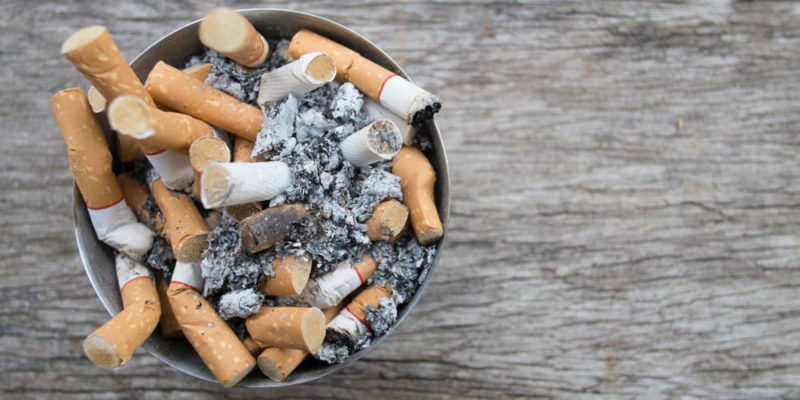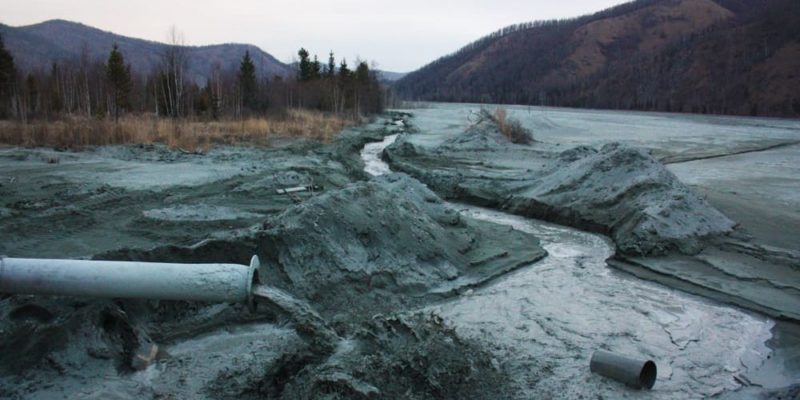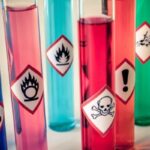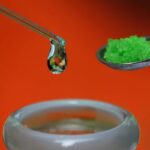We explain what toxic substances are, what causes their toxicity and their classification. Also, toxic substances in the home.

What are toxic substances?
toxic substances are those substances capable of causing harmful effects in a living organism upon coming into contact with it or being ingested. A toxic substance is any compound with toxicity, capable of producing poisoning.
From the oldest health treatises, the effect of poisons and toxins is known, as well as their relationship with concentration and dose, since practically any known substance is capable of producing poisoning, as long as it is administered in the appropriate dose.
Huge quantities of commonly vital elements such as oxygen, or compounds common to life such as carbon dioxide, can be toxic in large quantities, while other elements require very minimal doses to do much damage to the body.
The toxicity of a substance depends on three factors:
- Its chemical characteristics Depending on the composition of the substance, it will produce one or other effects in the body and these effects may be more or less counteractable.
- The dose it is in This involves the amount of the compound, but also its concentration. Taking a teaspoon of almost pure kerosene is not the same as taking a whole container. In this case, taking the bottle implies greater toxicity for the body. It is also not the same to take a teaspoon of almost pure kerosene as a container of a solution of 0.0005ml of kerosene in 1l of water. In the latter case, we will be drinking more volume of liquid when we take the canister, but with less kerosene content than what the teaspoon contains, that is, we would practically be drinking water because the solution would be very dilute, and taking the teaspoon would imply greater toxicity for the body.
- The characteristics of the exposed organism Certain substances may be very toxic to one organism and not to another, and there may be organisms individually sensitized to a substance (as in the case of allergies). For example, insecticides are lethal substances for insects, but not for humans (although they can cause allergic reactions).
On the other hand, the effects of a toxic substance on an organism depend on its exposure to it, understood as:
- Serious exposure It occurs when the individual is exposed to the substance just once, usually in high doses, which can cause serious and irreversible damage, or death.
- Chronic exposure It occurs when the individual is exposed to the substance over a period of time, usually in small doses.
See also: Chemical risk
Classification of toxic substances

One of the ways to classify toxic substances is according to their effect on the organism that is exposed to them, as follows:
- Poisonous substances They are those that, upon entering the body, cause damage that leads to death, due to their ability to affect the functioning of the body. They usually have localized effects in the body: hemotoxic (in the blood), neurotoxic (the brain), hepatotoxic (the liver), etc.
- Irritant or corrosive substances They are those that, upon coming into contact with the body, cause superficial damage, such as irritations, burns or loss of tissue (corrosion). In many cases, inhaling them is enough to cause burns in the respiratory tract.
- Carcinogenic substances They are those that usually cause the appearance of tumors and cancers in the body, because they interfere with DNA and cellular reproduction.
- Mutagenic substances They are those capable of altering the DNA of the body's cells and producing spontaneous mutations, whose effects can be unsuspected: from diseases and ailments, to deformations and motor conditions that are genetically transmitted to offspring.
- Toxic substances for reproduction They are those capable of producing total or partial infertility, or spontaneously interrupting a pregnancy, or even causing malformations in the fetus.
Examples of toxic substances

Some examples of toxic substances are:
- Carbon monoxide (CO). Upon entering the bloodstream it prevents the transport of oxygen by the hemoglobin molecule.
- Cyanide (CN–). This anion affects the action of fundamental enzymes in oxygen transport and is a very aggressive poison for living organisms.
- Heavy metals. Heavy metal ions (such as Pb2+ and Hg2+) react with -SH groups that form disulfide bridges in proteins. This causes denaturation (loss of higher order structures) of many proteins, resulting in the loss of biological function of these macromolecules.
- Asbestos. Also known as asbestos, it is a compound of silicate crystals, capable of causing lung diseases and inducing cancer.
- Arsenic (As). It is a chemical element that, despite being found in some vital organic compounds, is generally poisonous since it reacts with proteins easily, and is distributed in less than 24 hours in various organs of the body and causing their failure.
- Lead (Pb) and its derivatives. When this chemical element (commonly used in industries) is chronically consumed, it is associated with cases of anemia, infertility, and damage to the kidneys and nervous system.
- vinyl chloride. Used in plumbing and plastic injection, it can cause drowsiness and irritation of the mucous membranes when inhaled, and eventually liver cancer and skin lesions.
Toxic substances in the home

Our homes can be exposed to toxic substances, even in very small quantities. Some are part of products for ordinary use, so they require appropriate handling to avoid risks. The exact compounds in these products can vary greatly, so it is easier to identify them, that is, put labels on the containers to avoid confusing them. For example:
- Paintings enamels, solvents and thinners.
- Detergents with bleach and/or ammonia.
- Insecticides pesticides, herbicides and some fertilizers.
- The internal content of fluorescent bulbs thermometers, lava lamps, lighters and refrigerator gas pipes.
- Varnishes waxes, polishes and liquid unblockers.
Continue with: Chemicals
References
- “Toxicity” on Wikipedia.
- “Toxic substances” in the World Health Organization.
- “General information on toxic substances and poisoning” in the Ministry of Health of Argentina.
- “What are toxic substances?” in Icarito.
- “An introduction to toxic substances” in the New York State Department of Health (USA).
- “Toxic substance” in Encyclopedia.com.





